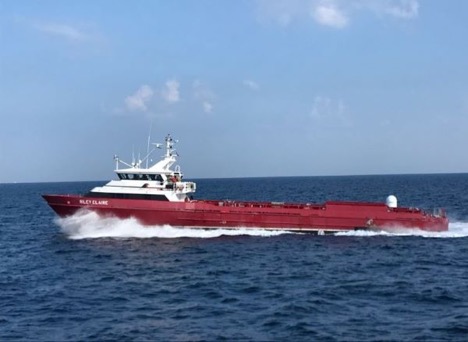Working on the Autonomy Part of Maritime Remotes
As the U.S. Navy moves forward with unmanned surface and undersea vessels in a range of sizes for myriad missions, some things remain constant among the vehicles: they’ll all need to continue making improvements in autonomy, they’ll all need parts that are reliable enough to go without human intervention for weeks or months at a time, and they’ll all need power sources for their long journeys.
The Navy and its industry partners, even as they work through the acquisition and development of specific programs, are hard at work tackling the “foundational” technology areas that cut across programs….
[A] core technology is autonomy software. Small’s program office has settled on an Unmanned Maritime Autonomy Architecture as the way to manage industry contributing to ever-evolving autonomy capabilities in a modular and open structure.
Rather than having each USV and UUV have its own set of software code that helps the vessel navigate to its destination while avoiding other ships, bad weather and other hazards, the UMAA will allow the program office to “buy or acquire or incorporate the best … autonomous behaviors” from industry and then apply them to all the vehicles in the portfolio.
“We’re still very platform-centric in describing our capabilities. I think as we get more mature on this journey, we’ll be able to talk more about behaviors and autonomy” that the fleet wants to pursue and then ask industry to deliver that behavior through a software product, Small said at the AUVSI/Sub League event.
He likened autonomy to the combat system on a destroyer – a DDG may keep the same hardware over its life but receive exponential improvements in warfighting capability through combat system upgrades.
For unmanned vehicles, “autonomy will be our exponential multiplier in advancing the capabilities of these platforms that we’re just starting to buy now,” he said.
Small told USNI News at a separate event, the Surface Navy Association’s annual conference, that the UMAA “allows us to upgrade the autonomy capability in the ships and integrate additional payloads, make [hull, mechanical and electrical] upgrades and do command and control updates without having to wholesale re-architect the entire autonomy software associated with the platform.”
He said his program office hosted three industry days in 2019 with a “very interactive group of industry, government and academia who are all involved in developing autonomy code.” He said they have set up a collaborative website and working group and are developing interface control documents that layout standards for those looking to write pieces of autonomy code for USV and UUV programs.
Small told USNI News they have published tow ICDs, which are already requirements for the Medium USV and Large USV programs, and as more ICDs are published they will be included in future contract actions….
The featured photo shows a Ghost Fleet Overlord test vessel takes part in a capstone demonstration during the conclusion of Phase I of the program in September. Two existing commercial fast supply vessels were converted into unmanned surface vessels (USVs) for Overlord testing, which will play a vital role in informing the Navy’s new classes of USVs. US Navy photo
For the complete article published in USNI News on January 31, 2020, see the following:
Navy, Industry Pursuing Autonomy Software, Reliable HM&E Systems for Unmanned Ships

